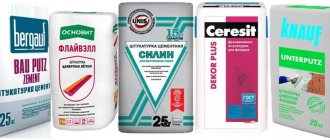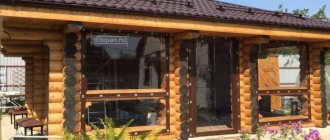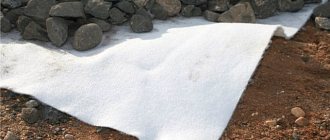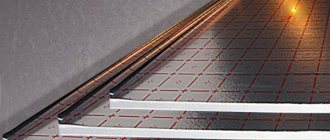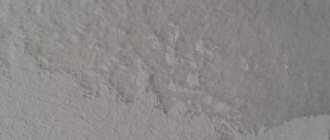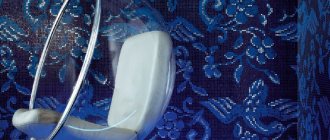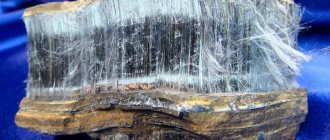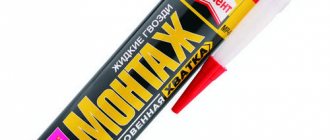The impact of negative external factors on the concrete surface leads to a deterioration in the technical characteristics of the coating. The use of liquid glass in concrete will help increase the resistance of the constructed or finished structure to the negative effects of precipitation, sudden temperature changes and other factors, under the influence of which the properties of concrete surfaces significantly deteriorate. Before you start using such a protective mixture, it is recommended to study its technical characteristics, preparation rules, as well as the pros and cons of use.
What does it represent?
In classic concrete mixtures, the main components are:
- sand;
- cement;
- crushed stone
Adding liquid glass to the mortar will help increase the service life of the structure.
By adding water to the dry composition, it will be possible to obtain a durable building material for pouring a foundation, concrete floor, as well as erecting structures for various purposes. However, sometimes the physical and technical properties of such concrete are not enough for the structure to reliably perform its functions. To improve the technical characteristics of the solution, a special concrete additive based on liquid glass is used. The result is a reliable coating that is resistant to negative external factors, thanks to which the structure will last much longer than the stated period.
Glass fiber reinforced concrete
The composition of glass fiber reinforced concrete includes alkali-resistant glass fiber. This is a universal building material. The production of monolithic blocks and sheet materials cannot be done without it. The composition may include additives: acrylic polymers, quick-hardening cement, dyes. Advantages of glass fiber reinforced concrete:
- resistance to water influence;
- strength;
- ease;
- high decorative qualities.
The composition of the material includes: fine-grained initial concrete mortar (sand filler - no more than 50%), fiberglass. It has high strength characteristics in bending, tension, compression, and impact.
Chemical resistance and frost resistance are also at a high level. Filling the solution with glass fiber is a labor-intensive process that requires uniform distribution of the fiber in the solution. Add it to the dry batch. The mixture becomes rigid and less flexible. In large layers, vibration compaction is required. The sheet material is produced by spraying.
Return to contents
Material properties
Using liquid glass in concrete allows you to achieve the following results:
- Increase moisture resistance. Such protection is necessary for structures that are constantly in contact with water. This could be a swimming pool, a damp basement, tanks, well rings, etc.
- Accelerate hardening. If you prepare a classic concrete solution using impregnation, the time for hardening of the finished composition will be much reduced. 24 hours will be enough for the surface to become ready for further construction work, while a regular mortar takes 3-5 days to dry.
- Increase waterproofing properties. Liquid glass for waterproofing concrete is added to prevent the appearance of mold and fungi on the surface. The fact is that the special composition of the product has a bactericidal effect, due to which microorganisms have no chance of developing and multiplying.
- Increase heat resistance. The surface on which ordinary concrete mortar is applied can withstand temperatures up to 200 °C; if it is higher, the plaster layer will collapse. But when you add liquid glass to the solution and treat the structure with it, it will be able to withstand temperatures of 1400 degrees or more. Therefore, when building a fireplace or stove, it is advisable to prepare a cement mortar with liquid glass.
Characteristics
ZhS is a material of a viscous, viscous consistency, which dries quickly in air and forms a monolithic, durable, water-impervious base.
Liquid glass, sodium and potassium, have the following characteristics:
- Prevents water from penetrating through the surface treated with the solution.
- Protects wooden and concrete surfaces from the penetration of fungus and pathogens.
- Prevents the accumulation of static voltage.
- Protects the treated surface from fire.
- Protects the base impregnated with the solution from the effects of acidic compounds.
- Helps accelerate the drying process and strength gain of cement mortars.
Application
The water-repellent properties of the material allow it to be used in the construction of pool bowls or for waterproofing foundations.
The scope of application of this high-quality material is extensive. The product is intended for the following purposes:
- Production of concrete with special characteristics, such as frost resistance, fire resistance, acid resistance.
- Waterproofing the foundation, if it is built in a place where groundwater is shallow.
- Waterproofing of walls, basements, floor screeds.
- Arrangement of pool bowls and well walls.
- Production of plaster with water-repellent properties.
- Production of fireproof mortar for plastering and sealing joints when installing fireplaces, stoves, and barbecues.
Definition
Glass concrete differs from conventional concrete in its high performance properties and advantages. Advantages of glass concrete:
- versatility of use - blocks, panels, sheets for cladding are made from glass concrete;
- lighter, main components: fine-grained cement, sand - equal proportions, fiberglass;
- high-strength - the material is resistant to stretching, compression, bending, impact resistance is fifteen times higher than that of a standard solution;
- a variety of additives has a positive effect on the properties of the material.
Factory-produced glass concrete is of higher quality than home-made glass.
Return to contents
Advantages and disadvantages
Liquid glass for concrete has a number of advantages, among which the main ones are:
- multifunctionality;
- increased adhesion;
- the formation of a shell on the surface that reliably protects the surface from ground and atmospheric moisture;
- reliable protection and strengthening of the treated structure;
- fast hardening times;
- easy preparation and application;
- affordable price.
The concrete mixture with the additive hardens quickly, so you need to work with it quickly.
However, before fermenting concrete with liquid glass, it is necessary to weigh the pros and cons, because in addition to the advantages, this method of protection also has disadvantages. The main ones are:
- It hardens quickly, which can make the pouring process more difficult because you have to work quickly.
- Narrow focus. It is advisable to apply the material for moisture protection purposes only on concrete and wooden surfaces. It is not suitable for other types of mortars.
- The need for strict adherence to proportions. If the instructions for preparing the mixture are not followed, the finished solution will be ineffective.
Kinds
There are several types of liquid glass. They are divided depending on the main substance used in the mixture.
Sodium
The formation based on sodium salts is characterized by a viscous structure, high strength and penetrating ability. It perfectly resists open fire and high temperatures, and the composition is also able to retain its shape even when the base on which it was applied is deformed.
Potassium
This material contains potassium salts. The structure of the mixture is loose, the composition has increased hygroscopicity, and forms a matte surface. Potassium compounds resist excessive heat and deformation well.
Lithium
It is used to provide the treated surface with protection from thermal effects. Produced in small batches. For some work, combined mixtures are used.
Preparation of the solution
Tools and materials
The technology for producing a concrete mixture with the addition of liquid glass is simple. You can make the solution yourself, but first you should prepare the equipment:
- container for mixing the solution;
- a special attachment for the drill, thanks to which you can quickly mix the components;
- brush, roller or spray;
- a level with which the horizontal or vertical of the surface being treated is controlled.
A solution with liquid glass is not made in a concrete mixer, because the solidification process occurs before the end of preparation.
A concrete mixer is not suitable for mixing the components of the solution, because the solution will begin to harden even before the end of preparation. Using a mechanical stirrer you can only combine all the materials, but without adding liquid glass. Then the required amount of impregnation is added and mixed manually. Materials you will need:
- cement;
- sifted sand;
- pure water.
Lifehack for gluing glass
Before we talk about how to glue glass to glass, we need to mention the importance of surface preparation. It is cleaned of grease and dirt using a solvent or a special cleaner.
Before starting the procedure, the exact fit of the parts is checked.
After this, before applying the composition, the surface must be heated to a temperature that will be approximately 30 degrees above room temperature.
Regardless of whether you use optical glue or any other, you need to apply it in a minimal amount. Afterwards, the parts are glued together for the time specified in the instructions, usually 60-120 seconds. If UV glue was used, the connection is additionally trained.
Restoring your favorite glass item is not difficult if you approach the repair correctly. But which glue for glass is better, everyone decides for himself. Among the many different compositions and brands, experts prefer UV, and ordinary people prefer the usual Moment. It will be doubly pleasant if you share your experience in the comment below.
–Tags
– Quote book
Flower buns with cottage cheese and confiture I offer another recipe for buns with cottage cheese, k.
Orange socks with elastic band 2x1 1. Women's woolen socks, size 38-39, good quality.
Beret (machine knitting) from IRINKA on LD is knitted with regular cross knitting, by the way, I think I eg.
BREAKING PANTS FOR 4-5 years old. The pattern looks something like this. I measured the OB and it turned out to be the widest.
Chicken breast “Japanese style”.
–Categories
- knitting (490)
- children (256)
- machine knitting (251)
- recipes (227)
- sewing (142)
- tips (126)
- interesting (24)
- flowers (13)
- my works (6)
- internet (5)
- felting (4)
- photo (3)
- pictures (3)
- weaving (2)
- for blog (1)
- bags (0)
- toys (0)
- (0)
-News
–Links
-Video
-Music
-I'm a photographer
Calculations and proportions
In order to correctly calculate the proportions of liquid glass in the total mass of the solution, it is important to determine over what period of time the composition should harden. Based on this criterion, it is recommended to study the table:
| Liquid glass consumption, % | Initial setting, min. | Final hardening, hour. |
| 2 | 40—45 | 20—24 |
| 5 | 25—30 | 14—17 |
| 8 | 10—15 | 6—8 |
| 10 | 5—10 | 2—4 |
The common ratio of cement, sand and liquid glass impregnation is:
A waterproofing coating with a special additive must be prepared by diluting it in one liter of water.
- To make a reliable waterproofing coating, you need to dilute liquid glass in 1 liter of water.
- To obtain a universal-purpose plasticizer, you need to mix cement and sand (proportion 1:3), then add silicate material to them with a volume of 1/5 of the total mass.
- If you need to cover and impregnate a finished plastered surface, water and liquid glass impregnation are mixed in a ratio of 5:1, respectively. Then the prepared solution must be applied to the concrete.
- To prepare a fire-resistant mortar, up to 5% silicate impregnation is added to the standard cement-concrete mixture.
Hardening
Remember that curing time is inversely proportional to the percentage of silicates. The time for complete drying and the beginning of setting depends on how many of them are introduced. Let's look at specific examples:
- A cement composition with a 2% additive content dries completely within 24 hours and begins to set after 40 minutes.
- By increasing the percentage of silicate to 10%, the drying time is reduced to 4 hours with a corresponding reduction in the onset of setting to 5 minutes.
Time intervals are given for concrete grade M400. Please note that, despite the recommendations of dubious sources advising supplementation of about 25%, this should not be done. Such an array crumbles within a day, and the work has to be done again.
Cooking: basic rules
Processing concrete with liquid glass will proceed quickly and efficiently if the mass is prepared correctly. The procedure is as follows:
- Prepare 10 liters of clean, filtered water. Process water is not suitable because the salts and other impurities contained in it negatively affect the reaction.
- Take liquid glass into a glass and carefully pour it into the water, carefully stirring the composition until a homogeneous consistency is obtained.
- Pour the prepared solution into a basin, and then, carefully mixing everything, add the cement-sand mixture in the calculated proportions. Adding liquid glass to concrete without first diluting it in water is prohibited, because the finished product will not meet the declared characteristics.
- Beat the mixture with a construction mixer or a drill with a special attachment.
- The finished product is poured onto a horizontal surface, for example, formwork, or it can be used to cover walls.
After treatment with liquid glass, the vertical surface will become absolutely smooth. If additional decorative finishing is planned, then in order to create roughness and reliable adhesion to the material used, it is recommended to additionally coat the wall with the construction product “Betonokontakt”.
Why choose liquid glass
Among other things, liquid glass has excellent adhesion to most surfaces. The material has an antiseptic effect and exhibits abrasion resistance during operation. This composition is characterized by anti-corrosion characteristics and even wind resistance.
Waterproofing with liquid glass is most common when using a composition as an ingredient. In its pure form, the material is used less often. During the production process, a mixture of quartz sand is fired with soda and crushed, this makes it possible to obtain a product that is then dissolved in water.
Safety precautions
Liquid glass is not a substance with a high level of toxicity. But if the material gets on the skin or mucous membranes, it causes irritation. To avoid injury, special equipment should be used during work. clothes, wear special gloves on your hands, and protect your eyes with safety glasses. Premises where construction work is carried out using liquid glass must be constantly ventilated. If it happens that the prepared solution gets on the skin, it is necessary to treat the damaged area with a weak solution of vinegar diluted in clean water.
Composite concrete
Glass-reinforced concrete is similar in its characteristics to reinforced concrete. Instead of metal rods, composite concrete is reinforced with fiberglass. The main advantageous qualities of composite reinforcement:
- resistance to moisture for a long time;
- low weight of fiberglass rods;
- affordable price;
- fiberglass material can be rolled into coils 300 m long, this ensures easy transportation;
- provides high thermal insulation.
The tensile strength of a composite rod is 2.5 times greater than that of a steel rod. Due to this feature, the fiberglass rod is needed thinner. Reinforcing concrete and creating a reinforcing belt made of glass fiber is easier and faster due to its following features:
- a light weight;
- reliable fixation using plastic clamps;
- does not freeze in winter, facilitating construction work at low temperatures.
Composite concrete is less susceptible to aggressive environments. Unlike glass-composite reinforcement, reinforced concrete reinforcement, which is susceptible to corrosion, can cause the structure to rupture from the inside and completely collapse.
The thickness of composite concrete can be smaller without affecting the quality of the structure. The weight of the structure becomes less, the strength remains at a high level. Glass concrete reinforcement does not require additional protection, like conventional metal reinforcement. The foundation can also be made unstrengthened, thanks to light reinforcement.
Return to contents
Glass-filled concrete with broken glass
An economical option for creating glass concrete. Instead of fiberglass, broken glass and closed glass products are added. Crushed stone can be replaced with broken glass from 20 to 100%. Thanks to this, glass concrete becomes lighter in weight, while its strength remains at a high level. Industrial production of glass-filled concrete with broken glass allows it to be used on site. It is resistant to acids and has low alkali resistance.
Return to contents
Scope of use
The properties of the material influence the area of application. Glass concrete is used for the manufacture of:
- Facing materials.
- Ceilings, walls.
- Decorative facade elements.
- Curbs, paving slabs.
- Park design elements.
- Fencing.
- Lattices.
Environmental friendliness expands the scope of use and allows the use of glass-filled composites to solve serious problems.
Fiberglass concrete
The composition of glass-optic concrete (Litracon) includes: concrete matrix, long glass fiber, oriented in a special way (including optical fiber). Litracon blocks have glass reinforcement. The material is transparent and has glass reinforcement. At home it is used as a decorative building material. In an industrial building, its thickness can reach 10 m. The cost of glass-optic concrete is high, experts are looking for an opportunity to make the material cheaper.
Return to contents

